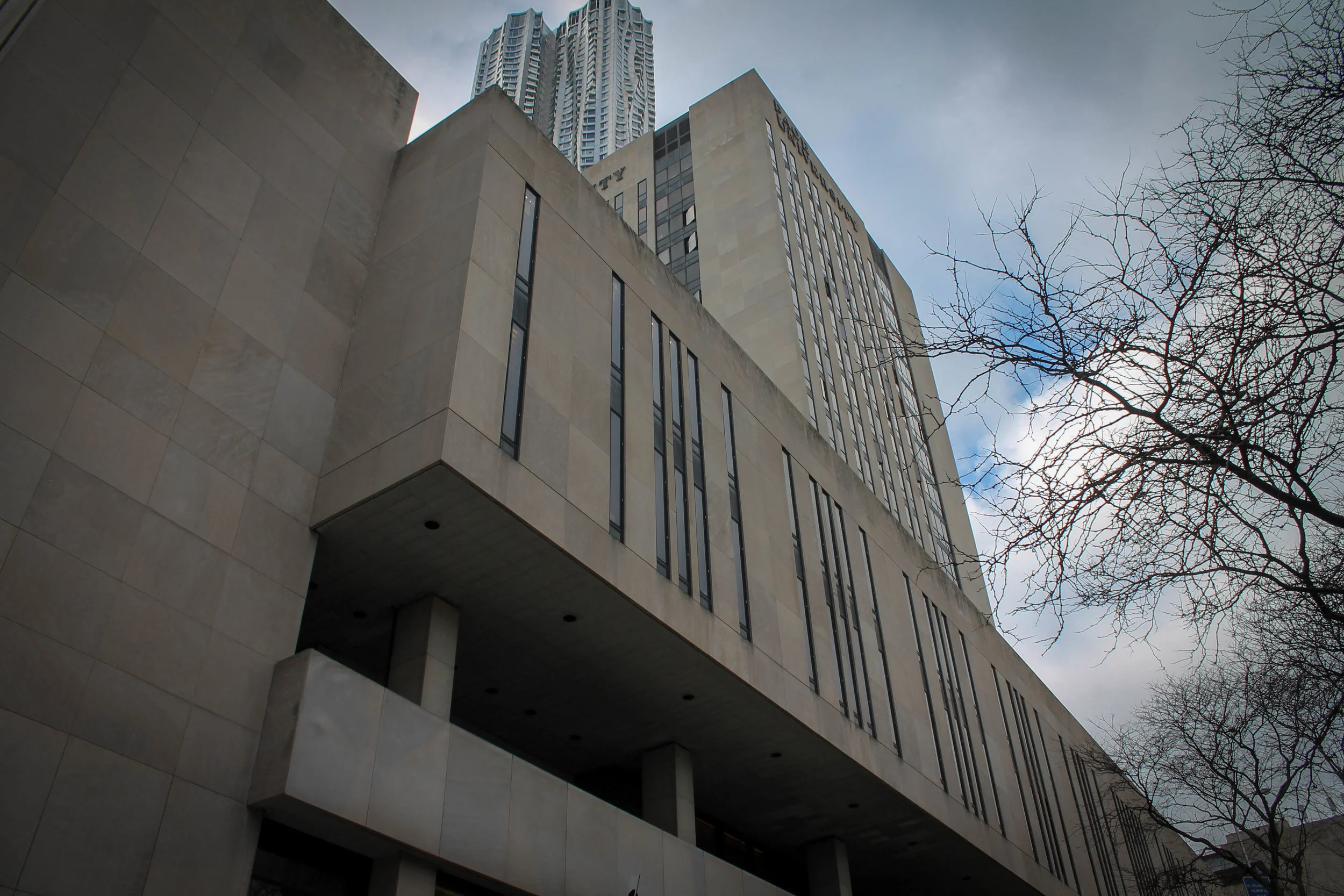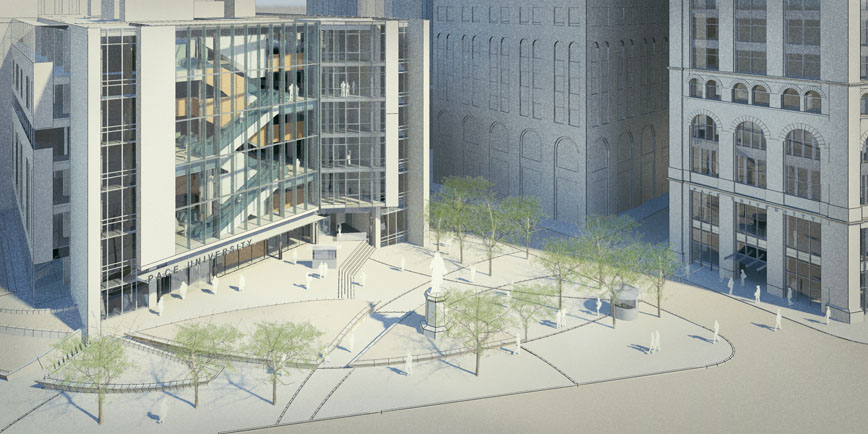PACE UNIVERSITY
East side of Pace University with Beekman Downtown Hospital to the left. Credit: NYC Urbanism, 2017.
ONE PACE PLAZA
Date: 1969
Architect: Eggers & Higgins
Address: 1 Pace Plaza between Frankfort Street and Park Row
Use: Academic
One Pace Plaza was created as part of the fifteen-acre Brooklyn Bridge South Urban Renewal Area (1964), a top-down approach that is difficult to contemplate for the area today. Not only is the site extremely valuable – it is across from City Hall and adjacent to the entrance of the Brooklyn Bridge – but two notable historic skyscrapers, the World and Tribune Buildings occupied the site. Both buildings were part of Newspaper Row and were each the tallest buildings in the world when completed. Formerly Newspaper Row, the location of the city's top newspapers including the Times, Tribune and World, most of the newspapers had moved to Midtown during the first half of the century. The World Building was demolished to build the Brooklyn Bridge onramp in 1955 and the Tribune Building was demolished for the Pace campus. Pace had been using the former New York Times Building at 41 Park Row for classes since 1953.
In 1964 the city sold the three block lot for a small sum to Pace who choose Eggers & Higgins, the architects of the Thomas Jefferson memorial in Washington D.C., to design their new campus, which opened in 1969. The 5-story building, surrounds an internal courtyard and supports a 13-story dormitory tower named "Maria Tower." The building was clad in limestone with narrow vertical bronze anodized, aluminum frame windows. A 1966 industry publication on the design of One Pace Plaza detailed the design:
"The horizontal five-story "teaching element" structure will be so constructed as to block city street noises from filtering into classrooms... Corridors along the perimeter of the building will serve as a "sound moat" to exclude the noises of surrounding city streets. Stairways and utility rooms will also be located at intervals around the building's perimeter, rather than placed in the core of the building as is usually done. This will permit later expansion without interruption of use of any part of the building."
Pace Plaza as seen from the Brooklyn Bridge onramp. Google Maps, 2018.
In 1983, three more stories were added to the west side of the base, this time with exterior walls made of a lighter glass. Pace also floated plans to demolish the New York Times building down the street, which was luckily never realized.
Most buildings in Manhattan factor pedestrian accessibility and impact on the skyline to their designs.But Pace was designed to be seen from a car as one enters onto the Brooklyn Bridge from Manhattan. Here, the bottom of the narrow windows align with the height of the roadway, passing by drivers like a staccato zoetrope.
The building is undoubtedly a fortress – in a way that many buildings of its era get labeled but few embody so clearly and didactically – a tower at each of its four corners, a massive cross-axial volume, and a central tower, all pierced by narrow, arrowslit-like windows. The later glass addition to the building’s upper floors recalls the contemporary chamfered corners of the Javits Center, while the dark glass avoids overly brightening the top of the building, maintaining its heavy appearance. Compared to Richard Morris Hunt's 1874 Tribune Building that previously occupied the site, Pace Plaza is a step backwards in New York City architecture, especially for such a prominent location at the foot of the Brooklyn Bridge and across from City Hall.
Pace University at street level. Credit: NYC Urbanism, 2017.
BRB Architects plan to "reorient" Printing House Square. Credit: BRB Architects
Recently Butler Rogers Baskett Architects released a master plan that re-envisioned the campus. Like many conversions of post-war, mid-century-modern buildings, BRB's plan looks to strip much of the limestone facade and replace it with glass, along with reclaiming William Street as a pedestrian thoroughfare. In 2017 Pace officially released a $190 million masterplan, this time with FXFOWLE Architects. The plan was similar to BRB's but with a vertical expansion of One Pace Plaza West to create 67,000 square feet of academic space. Pace says the redesign will modernize the facade, making it more welcoming and connected to the surrounding city; “when 1 Pace Plaza was built in the 1960s, it was a turbulent time, and the architecture was designed to screen out the city and make it a haven inside a shell.”
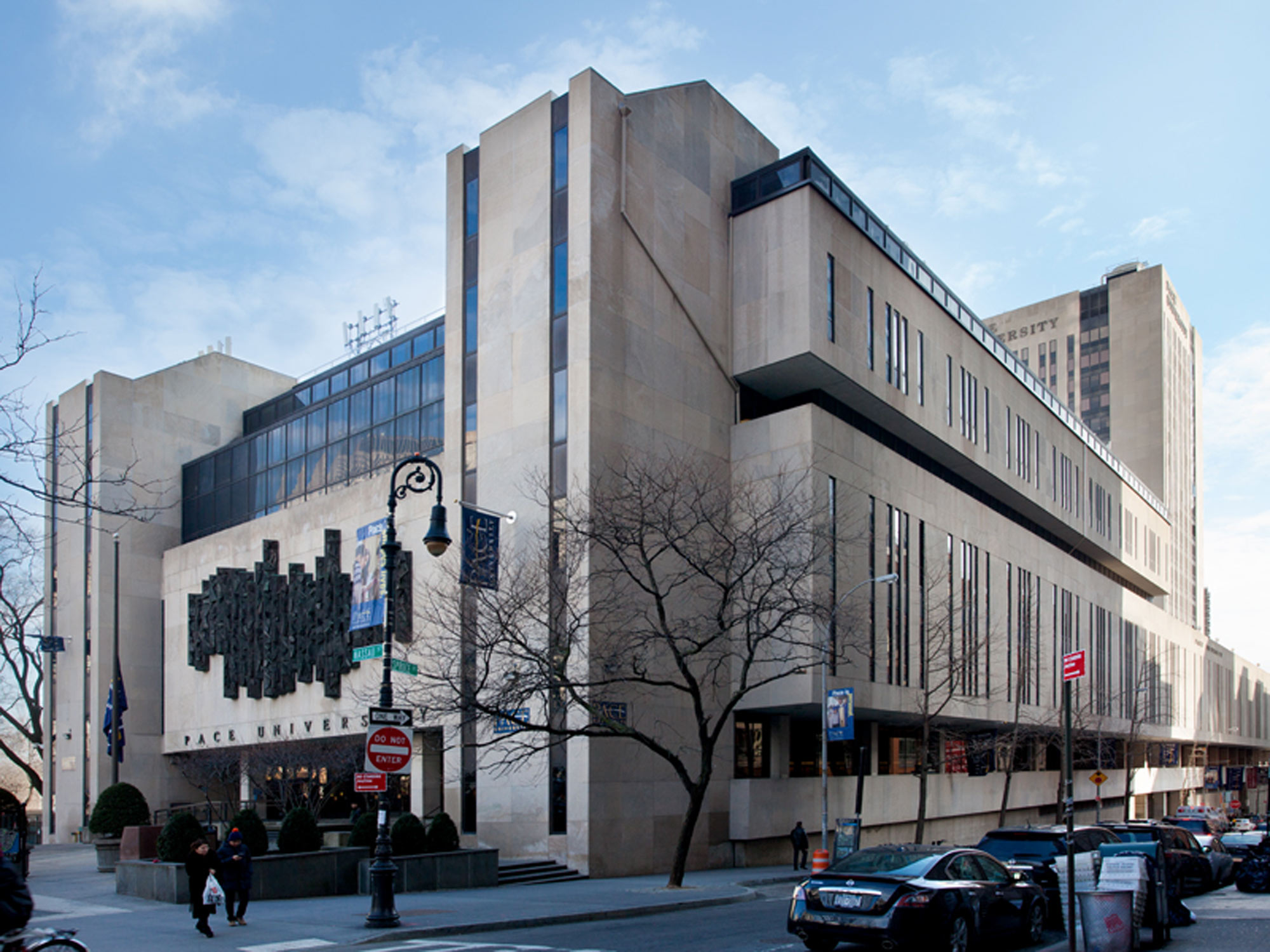
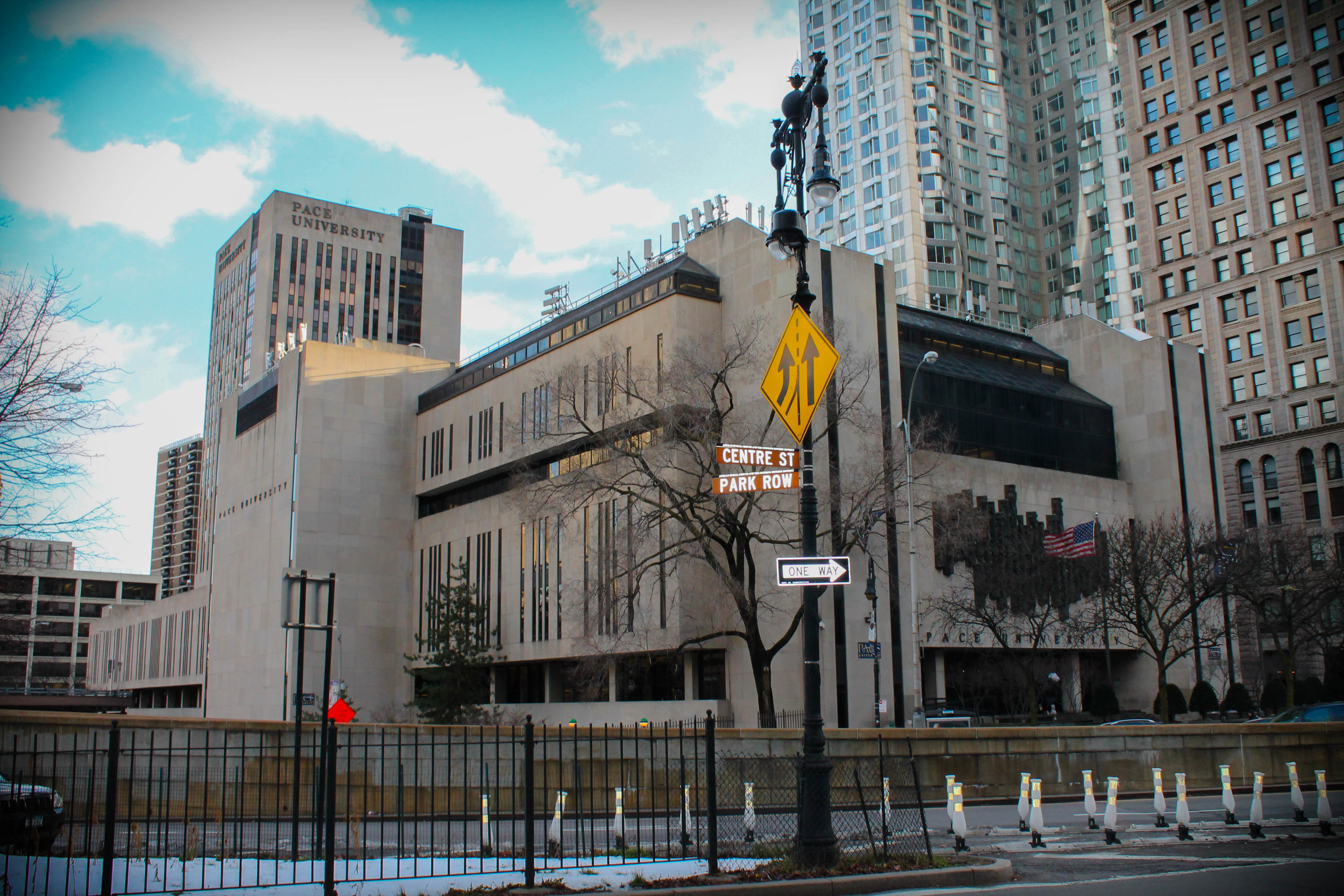
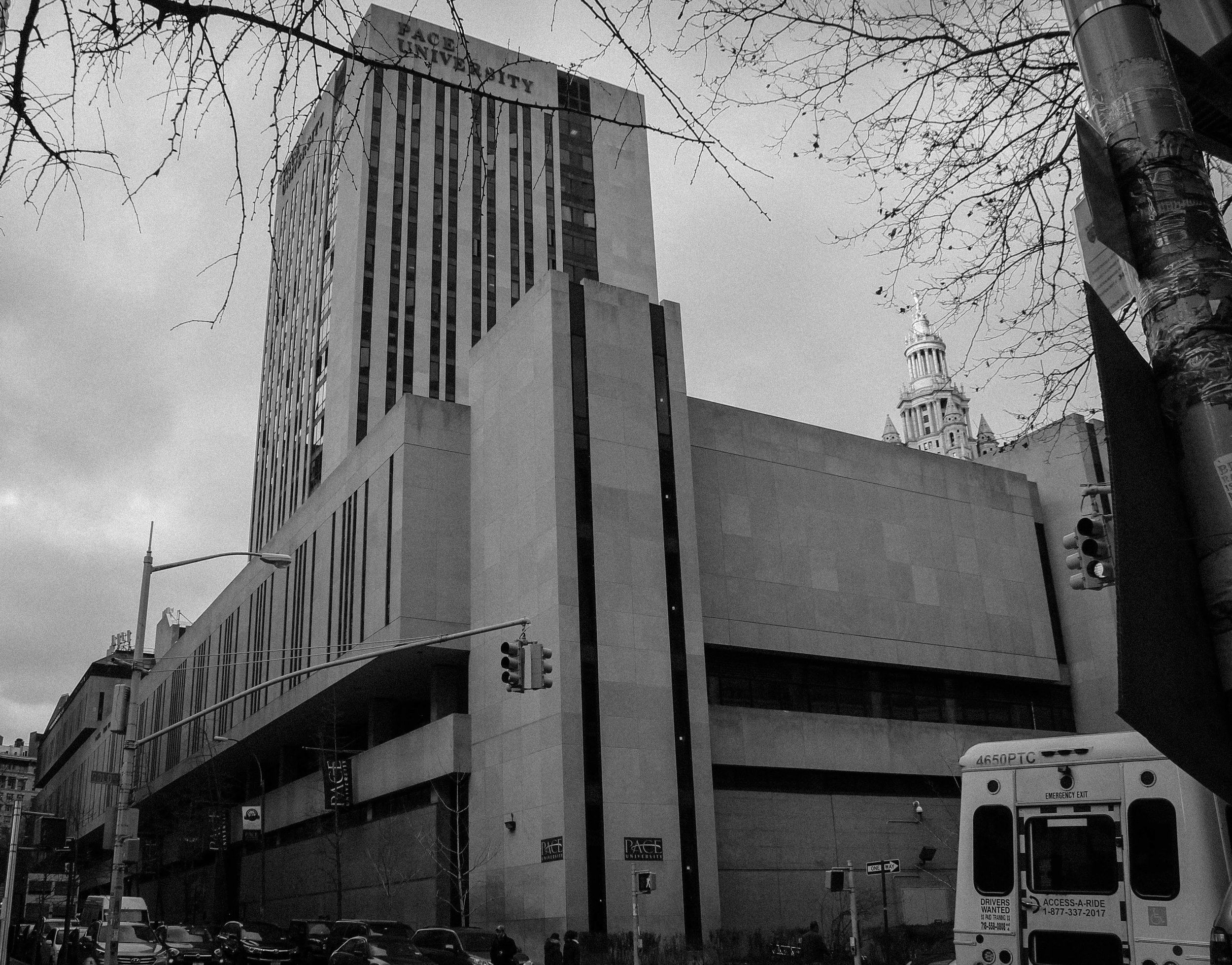

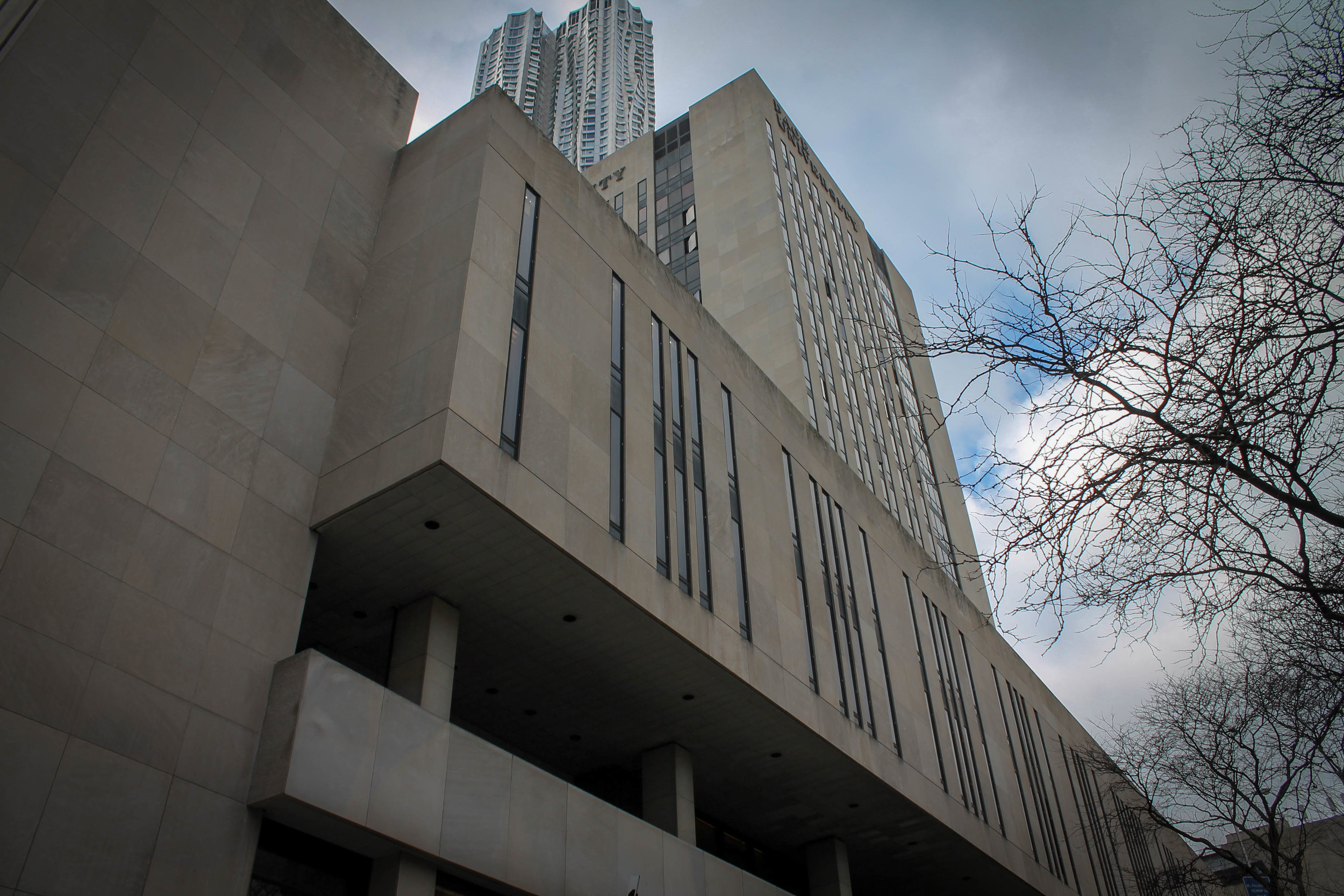
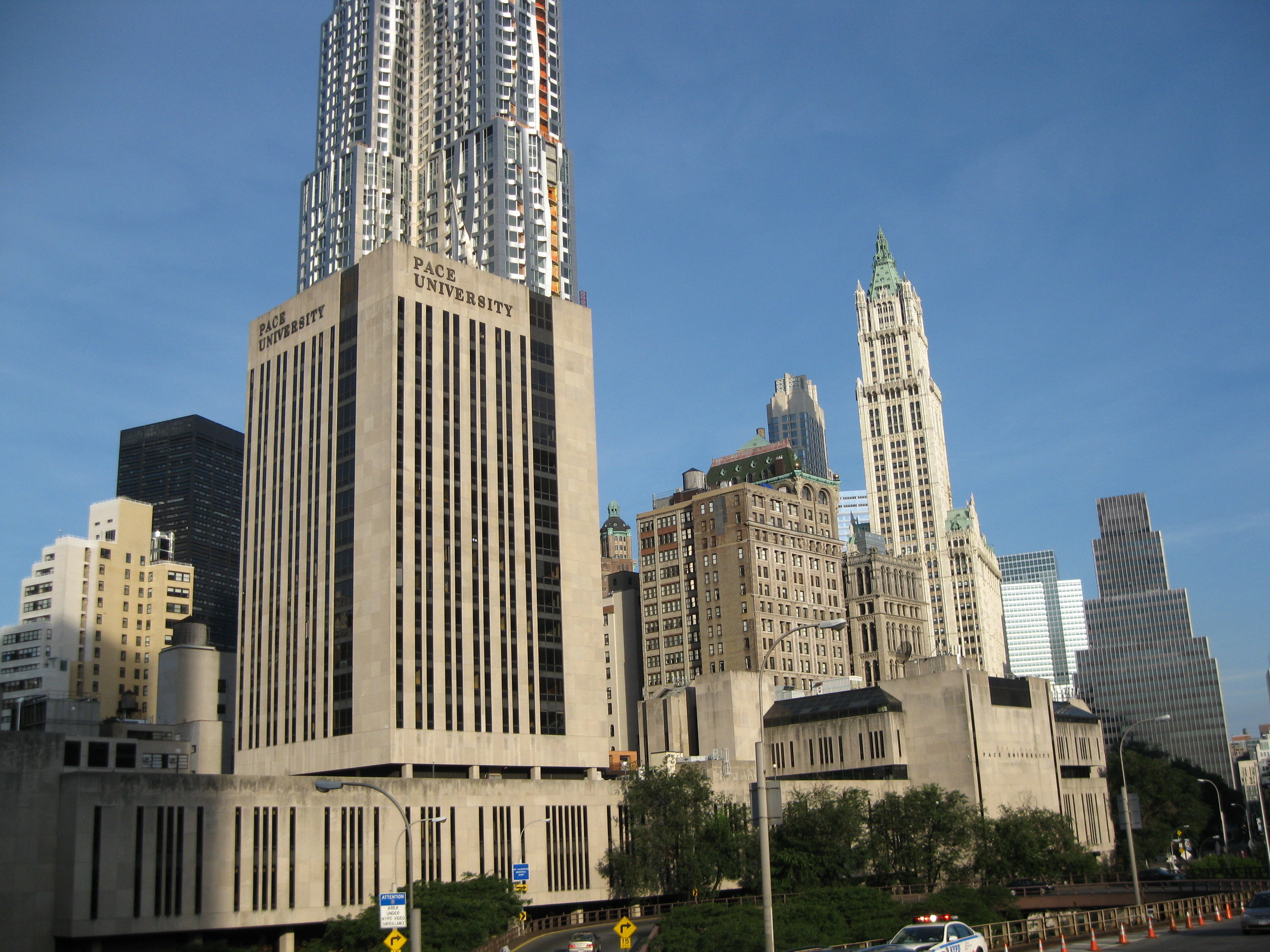
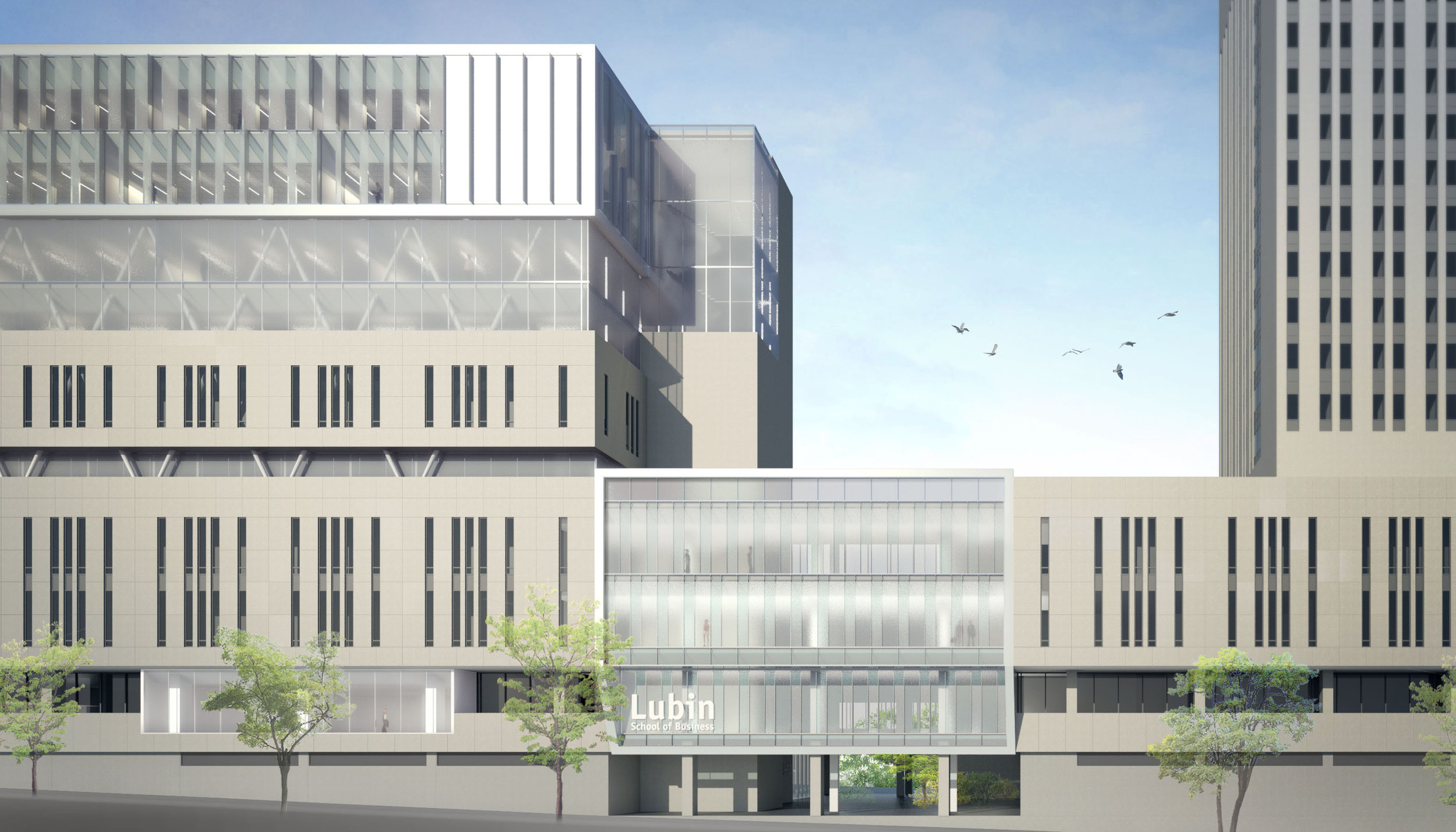
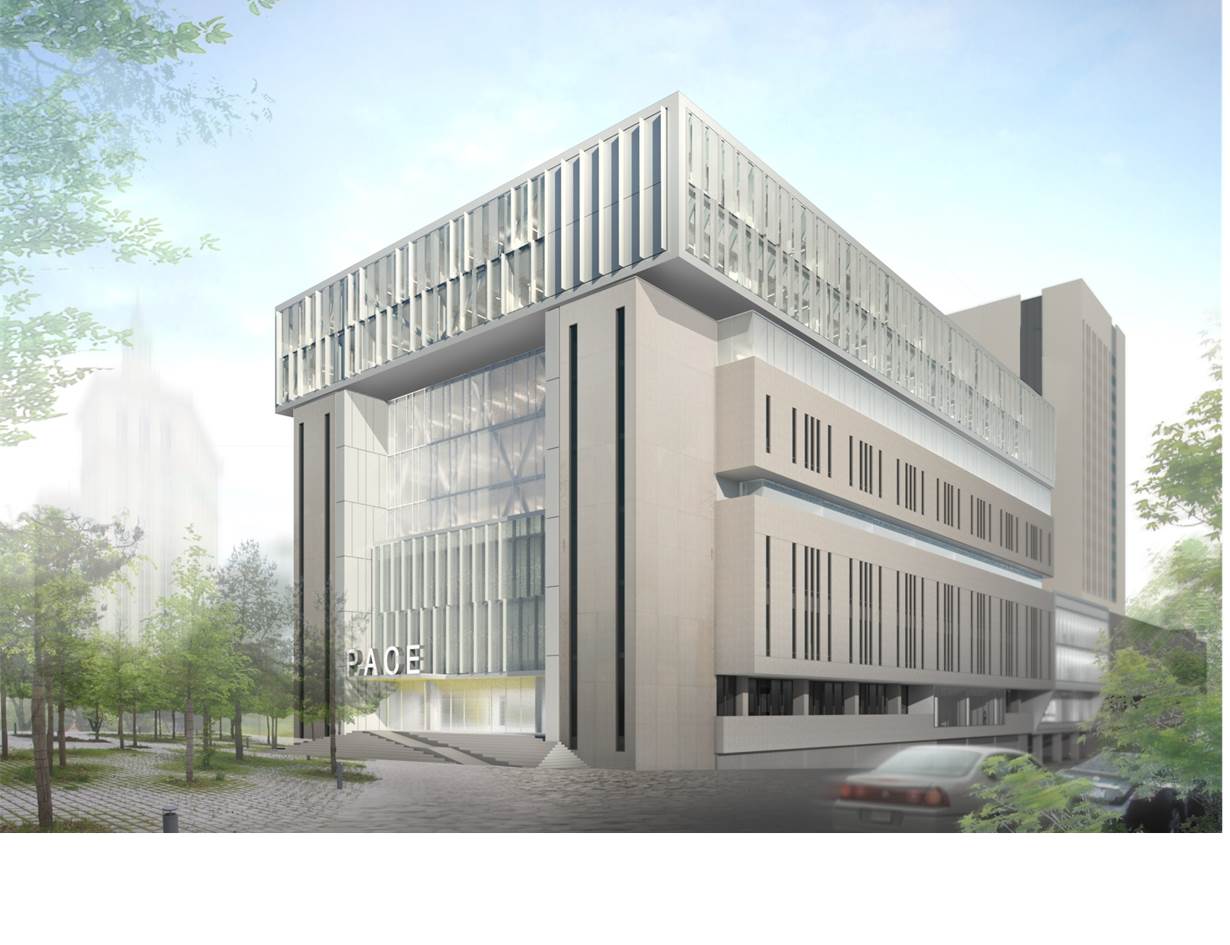
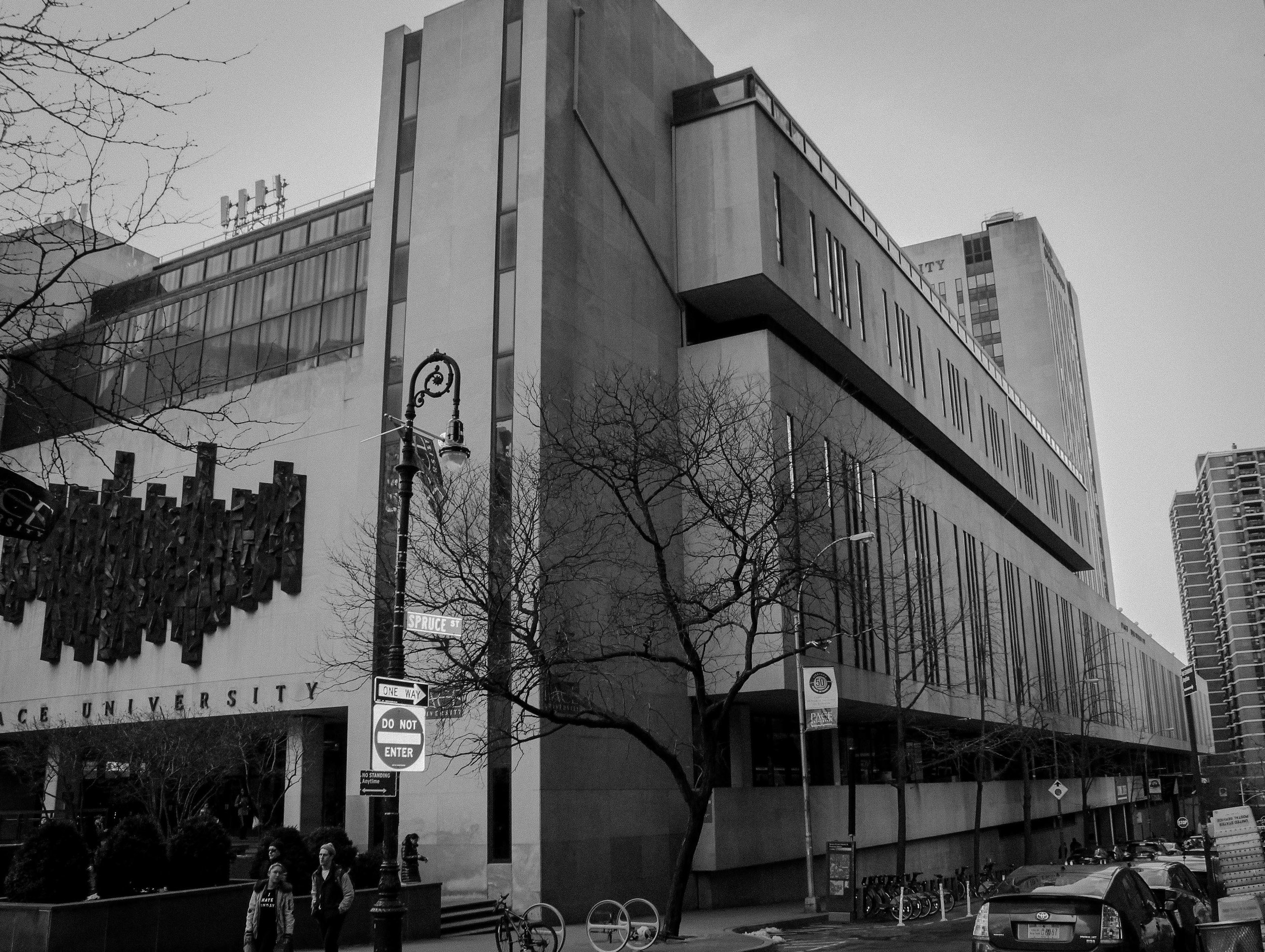
Sources:
One Pace Plaza Master Plan. Pace University, 2017,
Pace plans $190M upgrade to Lower Manhattan campus. The Real Deal, February 2017.
History of Pace: NY Campus. Pace University.



